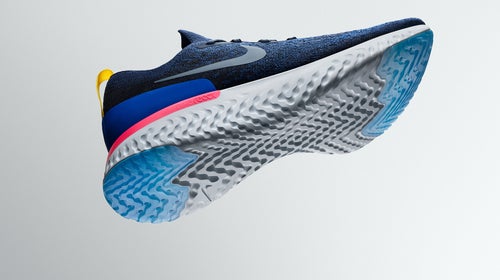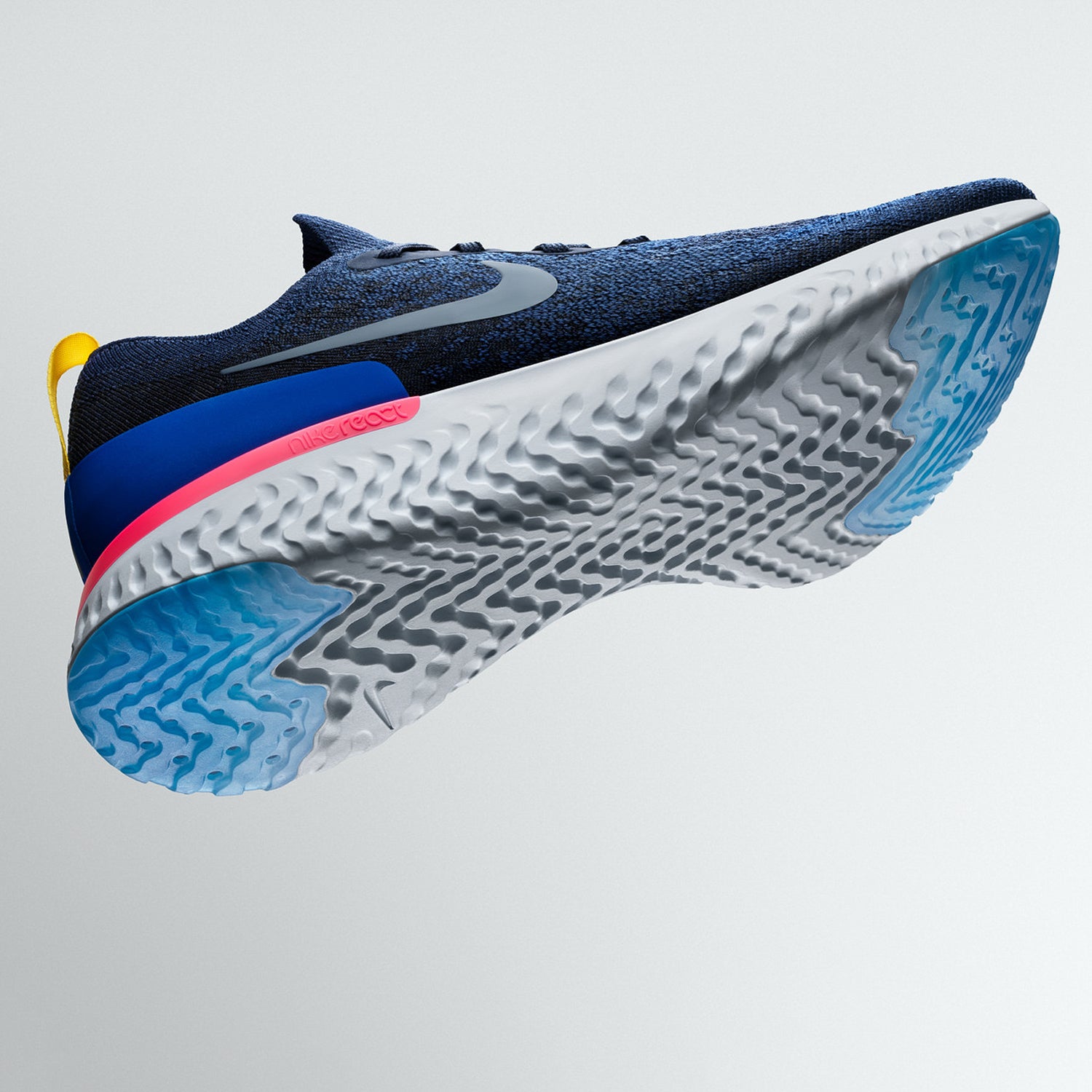The U.S. running shoe industry experienced its own in 2017. Rather than a chortling Muppet, the object of consumer frenzy was a $250 racing flat: the . From the outset, the 4% was touted as a kind of Excalibur of running shoes. Nike wasn’t coy in its claims: these shoes supposedly actually made you faster. People bought it. Literally. Despite its sizeable price tag, the Vaporfly 4% sold out at a dizzying rate and runners who managed to snag a pair could consider themselves lucky. Months after the shoe was first released, a member of my running team said that he’d finally found a pair in his size from third-party online vendor. Asking price: $600.
But that was last year. On Tuesday, Nike announced its latest running shoe gambit: the .
As was the case with the Vaporfly 4%, whose design incorporated the hyper-responsive “ZoomX” foam, Epic React Flyknit’s big selling point is its cushioning system. Like ZoomX, Nike’s “React” foam provides an unusual cocktail of cushioning, energy-return, and lightweight construction; despite the shoe’s robust appearance (stack height is considerable at 27 millimeters), a men’s Epic React Flyknit size 10 weighs a mere 8.45 ounces. What sets the new shoe apart from its predecessor, however, is that React foam is apparently able to put up with a little more wear and tear. The Vaporfly 4% is very much a race-day shoe—the ideal ride for notching a PR, but not so much logging hundreds of miles of training runs. The Epic React Flyknit, on the other hand, adds an element of durability, despite weighing only about two ounces more than the 4%.
The shoe will be available on February 22 and will retail for $150. I’ve got feet in the Epic React Flyknit so keep an eye out for a review that’ll go live around that time, comparing how it stacks up against to two other foam-centric models: the ($150), which came out last September, and Under Armour’s HOVR Sonic ($100), which will be available for purchase February 1.
Let the foam wars begin.


